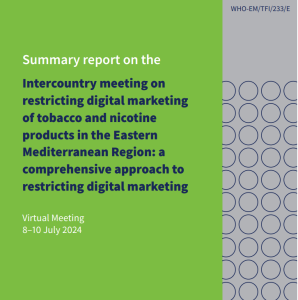Research also finds lower family wealth and gender diversity are risk factors in smoking and vaping
Teens who have disposable income, live in a lower-income home or are gender diverse are more likely to use e-cigarettes, according to a new study at the University of Waterloo.
Researchers examined survey responses from more than 46,000 adolescents in 167 schools across Canada as part of the COMPASS research system at Waterloo’s School of Public Health Sciences.
The increase in vaping among youth is a concerning trend leading to increased health risks and nicotine dependence. Vaping among Ontario youth increased from 7.6 per cent in 2013-2014 to 25.7 per cent in 2018-19, while the corresponding cigarette use declined from 11 per cent to 7.9 per cent.
“Our findings suggest that e-cigarettes are attracting new groups of adolescents who aren’t considered high-risk for traditional cigarette use,” said Dr. Kate Battista, a postdoctoral scholar in the School of Public Health Sciences at Waterloo. “We expected to find certain specific high-risk groups, but we instead found that nearly all demographic groups who had enough spending money were at risk of vaping.”
The researchers measured the frequency of e-cigarette, cigarette and dual use in addition to age, sex, gender, racial or ethnic background, disposable income, family wealth and having one’s own bedroom.
“The participants indicated that while some received an allowance from their parent or guardian, others had spending money that was earned through part-time jobs or cash for occasional work like babysitting,” Battista said.
“This tells us that the spending-money risk factor is more about the adolescent’s spending power, or having their own pocket money to purchase vapes, than it is about their socioeconomic position or family income.”
Since disposable income is a key risk factor, Battista said there is a need to address the availability of these products and for government-level policies and strategies to limit adolescents’ access to vapes.
In previous studies, lower family income and traditional cigarette use have been partially attributed to parents’ smoking behaviours, which may explain what influences adolescents with a lower socioeconomic status to use cigarettes, she said. However, nearly all cigarette users in this study also used e-cigarettes.
This study also found that more than five per cent of students in this sample identified as gender diverse, individuals who do not identify only as male or only female. Gender diverse students were at highest risk for dual vaping and smoking.
In similar studies, those who are gender diverse commonly report stress relief and conforming to peer social norms as reasons for vaping, which may be attributed to the discrimination and victimization experienced by this minority group.
“Adolescence is a pivotal period for the development of substance-use behaviours, and students who start using e-cigarettes and cigarettes now are at greater risk for issues like dependence and health consequences later in life,” Battista said.
“It is important for policymakers, public-health officials and schools to understand who is at risk so that they can develop and target prevention and early intervention initiatives to those most in need.”
Ever since e-cigarettes entered the market in 2003, vaping has increasingly gained popularity with the younger population. Battista says it is crucial to keep collecting and examining current data to create informed interventions.
The study, Do sociodemographic risk profiles for adolescents engaging in weekly e-cigarette, cigarette, and dual product use differ?, was recently published in BMC Public Health. It is part of the Contemporary Risk-taking by Canadian Youth (RISCY) study, a broader collaboration to examine contemporary risk-taking in Canadian youth, funded by the Canadian Institutes for Health Research.
Source: uwaterloo










